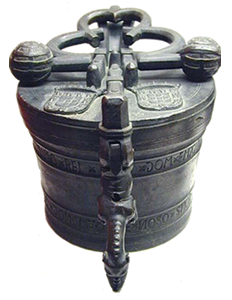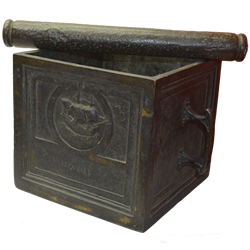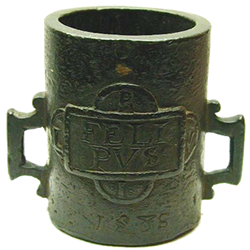
METROLOGICAL REFORMS OF THE MODERN ERA
Towards the end of the 15th century, the systems of weights and measures used in the kingdom were very diverse and incoherent, despite several attempts at standardization that were not very systematic. The same situation prevailed throughout Europe, where various monarchs tried to standardize the systems used in their countries.
Thus, In England, Henry VII accomplished a relevant metrological reform in 1496-97, for the first time written in English, and sent copies of the weights and measures to many of the main cities of the kingdom.
Closer to us, in the Iberian Peninsula, the Catholic kings, in 1488, after the union of the realms of Castille and Aragon, ordered that a single standard of weights be used for trade.
In Portugal, in 1487, King João II asked the Lisbon City Council and the representatives of the guilds to give their opinions about the idea of using a single type of mark for all of the products (“either the Cologne mark or the Marçaria mark”) and a new system of weights, with arráteis of 2 marks or 16 ounces. Shortly thereafter, the king decided that the system of weights should be based on the Cologne mark. Meanwhile, the king died without making any other decisions regarding the standardization of the system.

King Manuel I put in practice the ideas proposed by King João II and promoted a metrological reform, in which weights and measures and metrological control were defined. This reform took the entire reign to be carried out. The decisions taken at the end of the 15th century were being improved or clarified until the final version that was written in the Ordinances Published in 1521, the year of the monarch’s death, which, for the first time, established the Lisbon weights and measures as the national standards.

The metrological reform of King Manuel I, identified the weight (mass), length and volume measures, but did not promote the distribution of volume standards across the country. Therefore, in 1575, King Sebastião signed a Law (Law of Almeirim), in which it determined the distribution of these standards, establishing the first chain of metrological traceability in Portugal (applied to the volumes of solids and liquids): the Lisbon measures would be the national standard, serving as a reference for the distributed measures by the Comarcas which, in turn, would be the reference for those of the municipalities, from which the measures used by the merchants and who needed to have measures would be verified.

The Philippine Dynasty maintained national measures (different from those used in Spain), since the Ordinanations prepared by King Filipe I, which were edited after his death in 1603, known as the Ordenações Filipinas (Philippine Ordinations), maintain what had already been established in the previous Ordinations of King Manuel I regarding metrology.